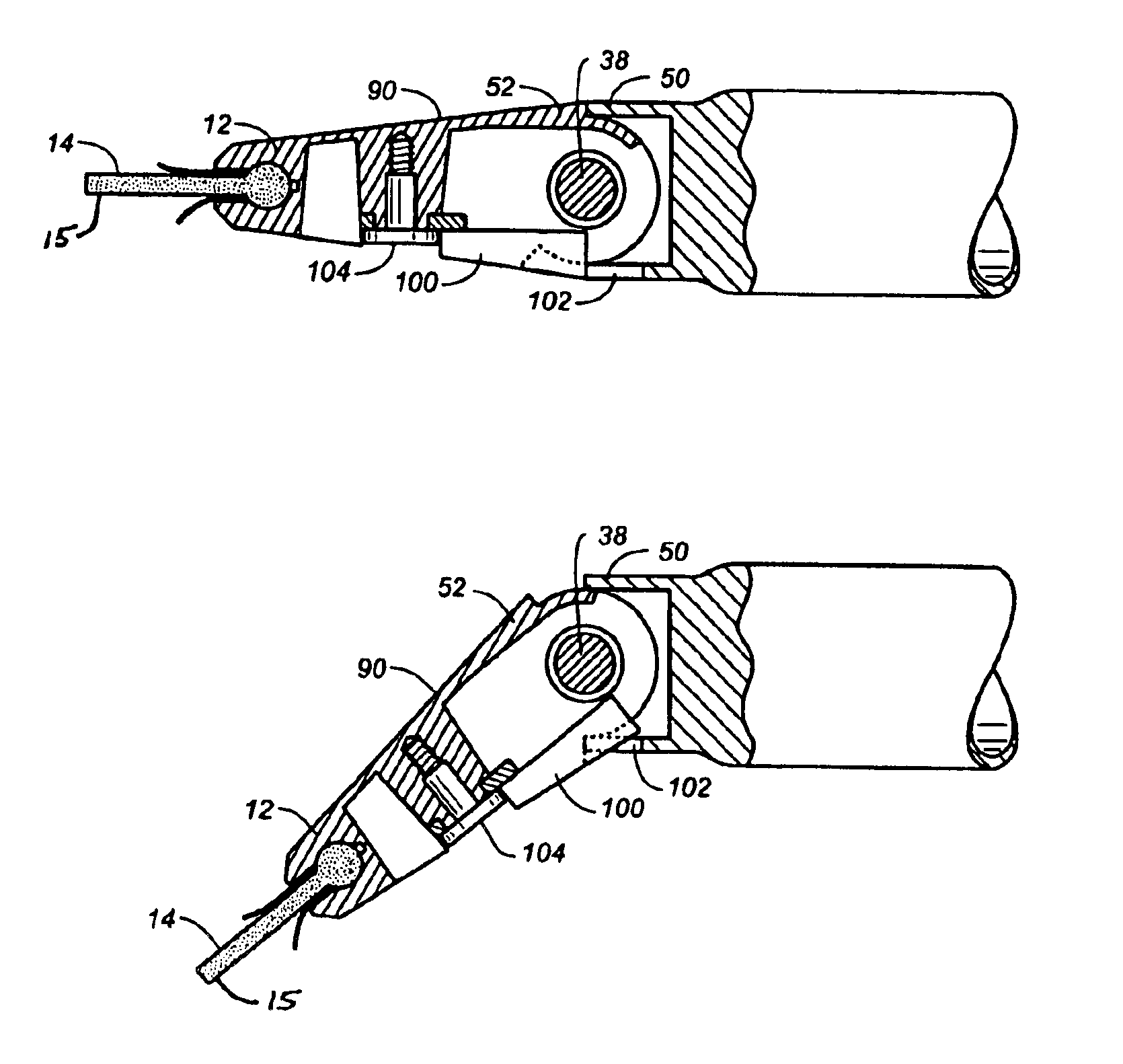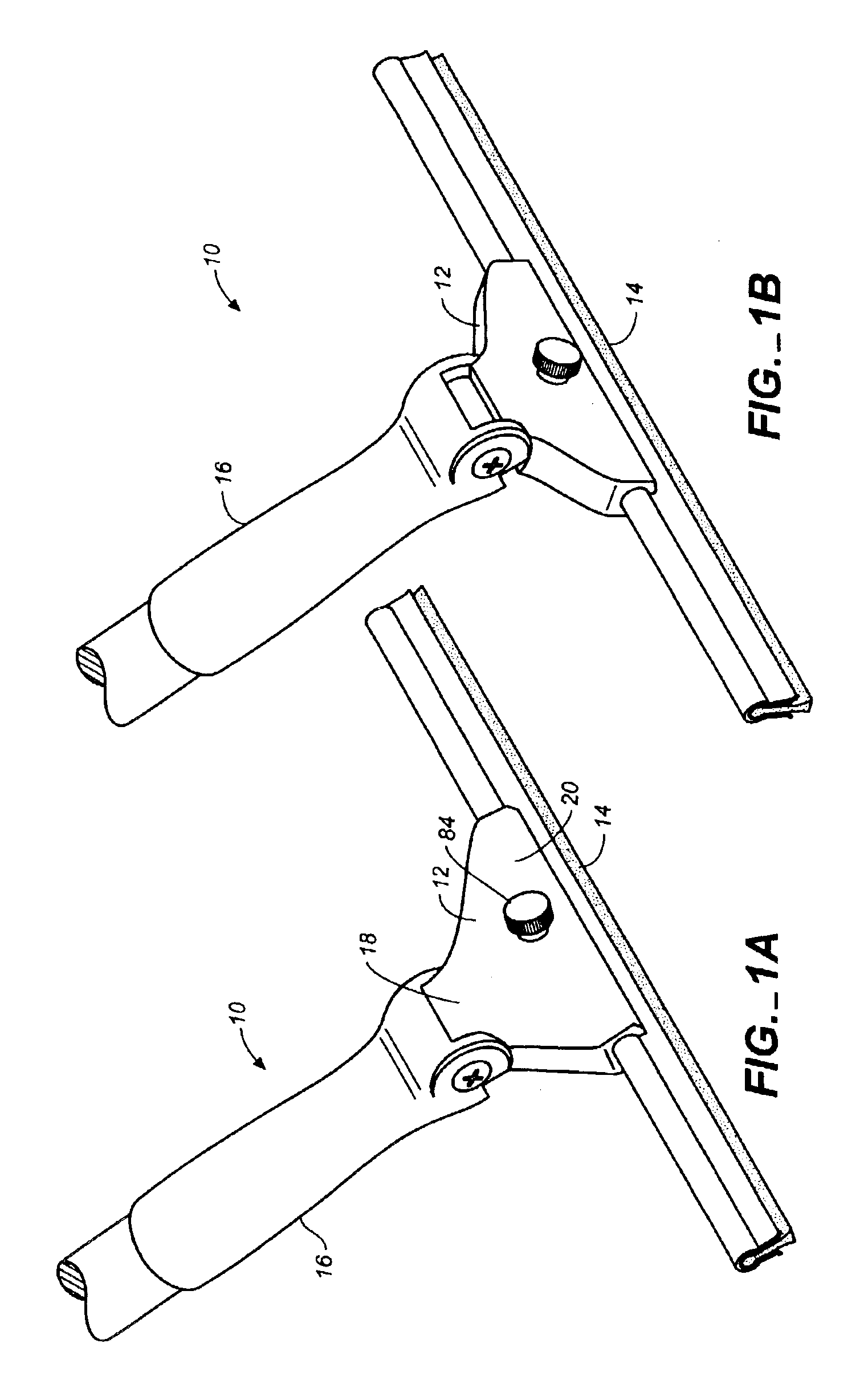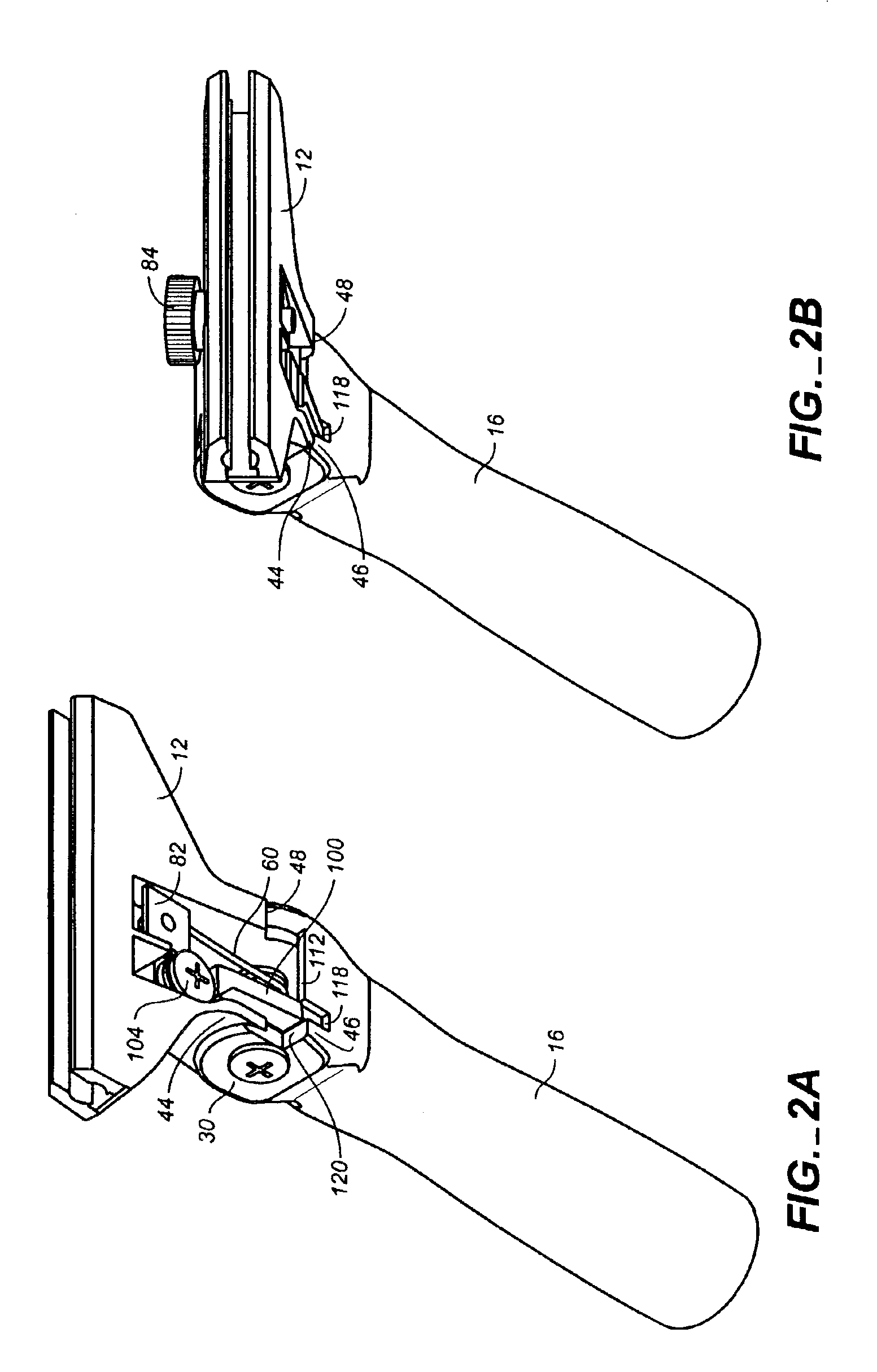Spring-biased pivoting squeegee
a technology of squeegee and spring, which is applied in the field of squeegees, can solve the problems of inability to wipe off the entire window in a continuous stroke as described above, inability to clean the window, and inability to achieve the effect of wiping off the entire window in a continuous stroke, etc., and achieves low tension, improved performance, and high degree of proficiency
- Summary
- Abstract
- Description
- Claims
- Application Information
AI Technical Summary
Benefits of technology
Problems solved by technology
Method used
Image
Examples
Embodiment Construction
[0013]FIG. 1A is a top perspective view of a spring-biased pivoting squeegee according to the invention showing the head in the biased position relative to the handle.
[0014]FIG. 1B is a top perspective view of the pivoting squeegee of FIG. 1A, but showing the head in the rest position relative to the handle.
[0015]FIG. 2A is a bottom perspective view of the invention with the wiping blade removed, and showing the head in the biased position relative to the handle and the locking lever in the unlocked position.
[0016]FIG. 2B is a bottom perspective view of the pivoting squeegee shown in FIG. 2A, but with the head in the rest position relative to the handle.
[0017]FIG. 2C is an exploded perspective view of a spring-biased pivoting squeegee according to the invention.
[0018]FIG. 3A is a side plan view of a pivoting squeegee according to the invention with the handle truncated, and showing the head in the biased position relative to the handle.
[0019]FIG. 3B is a side plan view of the pivoti...
PUM
 Login to View More
Login to View More Abstract
Description
Claims
Application Information
 Login to View More
Login to View More - R&D
- Intellectual Property
- Life Sciences
- Materials
- Tech Scout
- Unparalleled Data Quality
- Higher Quality Content
- 60% Fewer Hallucinations
Browse by: Latest US Patents, China's latest patents, Technical Efficacy Thesaurus, Application Domain, Technology Topic, Popular Technical Reports.
© 2025 PatSnap. All rights reserved.Legal|Privacy policy|Modern Slavery Act Transparency Statement|Sitemap|About US| Contact US: help@patsnap.com



